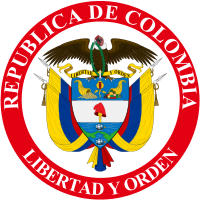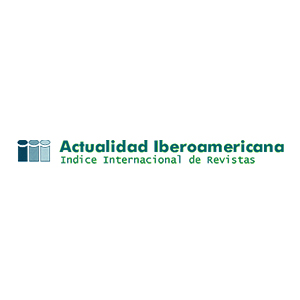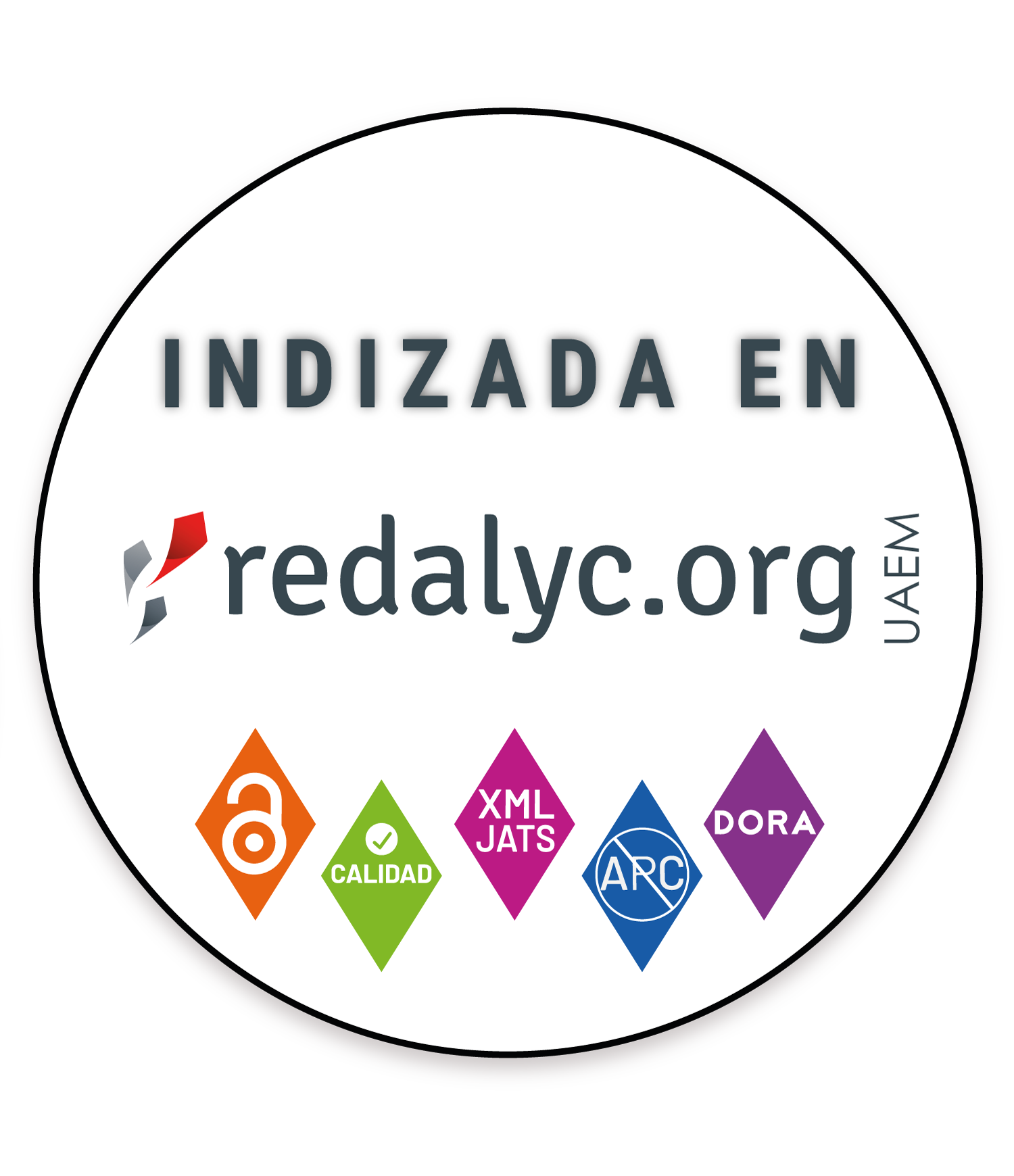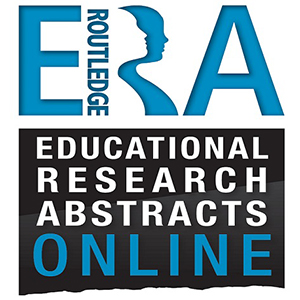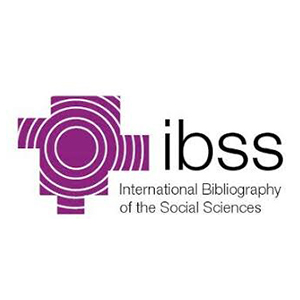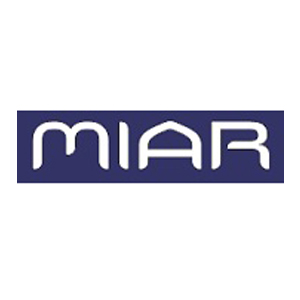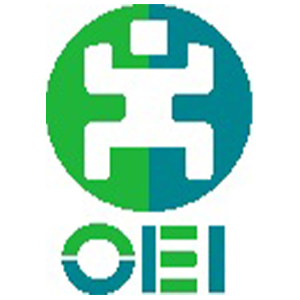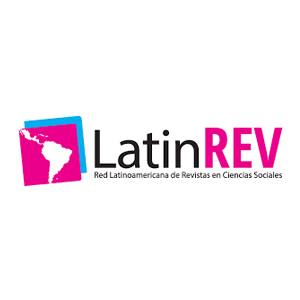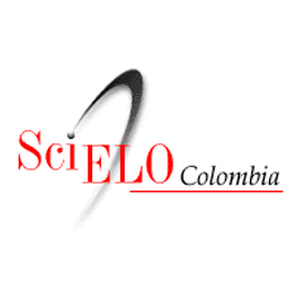Ciudades de Paz. Arte en asuntos de conflicto
Cities of Peace. Art in Conflict Matters
Fundada en el año 2005, la Iniciativa Ciudades de Paz (Cities of Peace ®), con sede en Nueva York, ha incluido desde su inicio pasantías y residencias de jóvenes artistas, académicos y expertos venidos de más de 25 países, quienes -a través del trabajo colaborativo- han creado nueve Obras Pictóricas de Ciudades de Paz, que honran la historia, la memoria y la cultura de ciudades del mundo que han sufrido los traumas de la guerra. Así, en el año 2015, Ciudades de Paz fue invitado especial para la septuagésima conmemoración de la liberación del campo de concentración de Auschwitz-Birkenau; También en 2015, Ciudades de Paz recibió invitación del entonces primer ministro de Armenia, hoy rector de la Universidad Eslava Armenio-Rusa (RAU) para crear la décima obra pictórica de la iniciativa Ciudades de Paz, esta vez en Ereván, con motivo de la centésima conmemoración del Genocidio Armenio. Con esto se da un cambio de enfoque sustancial en el programa: en adelante se hace la obra en la ciudad misma que está siendo motivo del homenaje, trabajando junto con sus ciudadanos, estudiantes, artistas, académicos y directores de museos. El éxito rotundo y la vitalidad de las obras realizadas en Auschwitz y en Ereván atestiguan del poder del arte creado en zonas de conflicto histórico o actual. Este artículo explora los elementos que contribuyeron al espíritu y al éxito de la Iniciativa Ciudades de Paz en estos lugares, mientras establece nuevas metas para continuar su desarrollo y aumentar su poder de influencia como una modalidad de construcción internacional de paz, creando así el andamiaje y la estructura de una nueva forma de diplomacia cultural, articulada a través del poder transformador de un arte reflexivo y capaz de iluminar.
Cities, Artist, Art, Peacebuilding, Armenia, Auschwitz (en)
Ayodele, Jonah. Arts Education and Interculturalism . Huffington Post, 2016
Guéhenno, Jean-Marie. Symposium: Cities of Peace as a Tool for Global Peacebuilding. The Cathedral of St. John the Divine, New York, NY. 9 June, 2009. Speech.
Spurr, Jeff. Cities of Peace Treasure Suite. p. 3. Ellen Frank Illumination Arts Foundation, 2008. Print.
Trippi, Peter. Cities of Peace Panel on Art & Global Understanding. Guild Hall, East Hampton, NY. 17 Jan. 2011. Speech
APA
ACM
ACS
ABNT
Chicago
Harvard
IEEE
MLA
Turabian
Vancouver
Descargar cita
Citaciones

Métricas PlumX
Visitas
Descargas
Recibido: 2 de septiembre de 2016; Aceptado: 25 de noviembre de 2016
Abstract
Founded in 2005, the Cities of Peace Initiative, located in New York, has included young artist interns, scholars, and experts from more than 25 countries who, through collaborative work, have created nine Cities of Peace paintings that honor the history and culture of world cities that have suffered trauma. In 2015, Cities of Peace was invited to the 70th Commemoration of the Liberation of Auschwitz-Birkenau; also in 2015, Cities of Peace was invited by the former Prime Minister of Armenia, now Rector of the Russian-Armenian (Slavonic) University (RAU), to create the 10th Cities of Peace painting in Yerevan on the occasion of the 100th Anniversary of Armenian Genocide. This marks a substantial shift in program: working in the actual city with the citizens - students, artists, scholars, and museum directors - being honored. The rich success and vitality of the work in Auschwitz and in Yerevan attest to the power of art created in historic or current conflict zones. This paper explores the elements that contributed to the spirit and success of the Cities of Peace Initiative in these locations and establishes goals for its continuing growth, as an international peacebuilding modality, and in architecting a new cultural diplomacy through the transformational power of illuminated art.
Keywords:
Cities, Artist, Art, Peacebuilding, Armenia, Auschwitz.Resumen
Fundada en el año 2005, la Iniciativa Ciudades de Paz (Cities of Peace ®), con sede en Nueva York, ha incluido desde su inicio pasantías y residencias de jóvenes artistas, académicos y expertos venidos de más de 25 países, quienes -a través del trabajo colaborativo- han creado nueve Obras Pictóricas de Ciudades de Paz, que honran la historia, la memoria y la cultura de ciudades del mundo que han sufrido los traumas de la guerra. Así, en el año 2015, Ciudades de Paz fue invitado especial para la septuagésima conmemoración de la liberación del campo de concentración de Auschwitz-Birkenau; También en 2015, Ciudades de Paz recibió invitación del entonces primer ministro de Armenia, hoy rector de la Universidad Eslava Armenio-Rusa (RAU) para crear la décima obra pictórica de la iniciativa Ciudades de Paz, esta vez en Ereván, con motivo de la centésima conmemoración del Genocidio Armenio. Con esto se da un cambio de enfoque sustancial en el programa: en adelante se hace la obra en la ciudad misma que está siendo motivo del homenaje, trabajando junto con sus ciudadanos, estudiantes, artistas, académicos y directores de museos. El éxito rotundo y la vitalidad de las obras realizadas en Auschwitz y en Ereván atestiguan del poder del arte creado en zonas de conflicto histórico o actual. Este artículo explora los elementos que contribuyeron al espíritu y al éxito de la Iniciativa Ciudades de Paz en estos lugares, mientras establece nuevas metas para continuar su desarrollo y aumentar su poder de influencia como una modalidad de construcción internacional de paz, creando así el andamiaje y la estructura de una nueva forma de diplomacia cultural, articulada a través del poder transformador de un arte reflexivo y capaz de iluminar.
Palabras clave:
Ciudades, Arte, Artista, Construcción de Paz, Armenia, Auschwitz.Resumo
Fundada no ano de 2005, a iniciativa Cidades de Paz (Cities of Peace ®), com sede em Nova Iorque, tem incluído desde seu inicio estágios e residências de jovens artistas, acadêmicos e expertos vindos de mais de 25 países, quem -por meio do trabalho colaborativo- tem criado nove Obras Pictóricas de Cidades de Paz, que honram a historia, a memória e a cultura de cidades do mundo que tem sofrido os traumas da guerra. Assim, no ano 2015, Cidades de Paz foi convidado especial para a septuagésima comemoração da liberação do campo de concentração de Auschwitz-Birkenau; também em 2015, Cidades de Paz recebeu convite do Primeiro ministro (naquele momento) de Armênia, e hoje reitor da Universidade Eslava Armênio-Russa (RAU) para criar a décima obra pictórica da iniciativa Cidades em Paz, nesta vez em Ereván, com motivo da centésima comemoração do Genocídio Armênio. Com isto faz-se uma mudança de perspectiva substancial no programa: em diante se faz a obra na cidade mesma que esta sendo motivo de homenagem, trabalhando junto com seus cidadãos, estudantes, artistas, acadêmicos e diretores de museus. O sucesso absoluto e a vitalidade das obras realizadas em Auschwitz e em Ereván dão testemunha do poder da arte feita em lugares de conflito histórico ou atual. Este artigo explora os elementos que contribuíram ao espírito e ao sucesso da Iniciativa Cidades de Paz nestes lugares, enquanto se estabelecem novos alvos para continuar seu desenvolvimento e aumentar seu poder de influencia como uma modalidade de construção internacional de paz, criando assim a estrutura e a organização de uma nova forma de diplomacia cultural, articulada por meio do poder transformador de uma arte reflexiva e capaz de iluminar.
Palavras chave:
Cidades, Arte, Artista, Construção de Paz, Armênia, Auschwitz.Introduction *
The Cities of Peace Initiative offers a participatory, collaborative, and interdisciplinary program in peacebuilding and leadership for students, artists, educators, scholars, and experts. It involves the use of art to celebrate civil society through a multi-disciplinary curriculum. Importantly, the Cities of Peace initiative provides participants with concepts, language, and experience to aid them in developing an active sense of global responsibility, capacity for conflict resolution, and community building. By bridging ethnic and religious diversity and national identity, Cities of Peace opens a space for inter-cultural dialogue through multiple platforms, both pedagogical and literal, to foster a strong sense of community accountability and human rights development.
Cities of Peace is a communications catalyst, architecting a new cultural diplomacy. With the participation of international interns, scholars, and experts from more than 25 countries, Cities of Peace is a series of gold-illuminated paintings that honor the history and culture of world cities that have suffered trauma and strife: Baghdad, Beijing, Hiroshima, Jerusalem, Kabul, Lhasa, Monrovia, New York, Sarajevo, and Yerevan. Our future plans include: Aleppo, Beirut, Belfast, Berlin, Bujumbura, Damascus, Dresden, Kinshasa, Mogadishu, Oswiecim, Phnom Penh, Seoul, St. Petersburg, and Tbilisi.
Hypothesis
Cities of Peace transmits knowledge to future generations and increases access to the free flow of information through peace education and collaborative networks. The initiative offers a visible and invisible frame created by many people and by many hands working together to build global understanding, by fostering compassion and knowledge that are prerequisite to achieving lasting peace. "Cities of Peace directs world attention to the critical role of cities in sustaining what is creative and hopeful in civilization. It inspires those who view these works of art to protect, develop, and improve critical urban centers throughout the world."1 Cities of Peace includes curricula, films, and workshops on human rights and peace education.
"Cities of Peace encourages us to acknowledge the grandeur of humankind's creative powers, and the triumph of hope over the forces of darkness and entropy. These paintings are such exceptional communicative as well as aesthetic artifacts, and their wide visibility is a most salutary prospect."2
Methodology & Application
The goal of Cities of Peace is to guide, rather than control, the project's trajectory. We act as facilitators, educators, and peace brokers, enabling communication within cultures that have been traumatized by war. Cities of Peace includes three distinct phases: Creation, Program and Policy, and exhibition.
The following components can be implemented in total or in part:
-
Creation of a new painting. This includes coordinating, designing, and creating the work in collaboration with students, artists, committed local partners, and professionals from different academic fields, including sciences, humanities, literature, and history, United Nations systems, research institutes, university networks, and parliamentarians.
-
Policy and Program (education). Cities of Peace expands institutional fields by offering opportunities for workshops, lectures, and symposia that address the essential role of education and cultural preservation. Cities of Peace strives to achieve international standards of equity and human rights learning in order to strengthen policies for unity and sustainable solutions that, in turn, contribute opportunities for future generations to fully participate in global communities as well as in the society honored by the work.
-
Exhibition. The Cities of Peace exhibition of the monumental work includes a ceremonial public unveiling of the new work. The venue/venues for the exhibitions and events are collaboratively determined by host partners and the Cities of Peace leadership team.
These three broader phases are broken down into distinct stages. We outline here our guiding methodology for the Creation phase of the Cities of Peace paintings, divided into five stages: 1) idea; 2) concept; 3) research; 4) design; 5) creation.
In the first stage of the Cities of Peace Creation phase, we work with our team of participants to envision how Cities of Peace will help to facilitate peaceful and diplomatic relationships between opposing groups and to heal the often trans-generational wounds of war. Our goal is to think big and to draw upon the diverse strengths of our partnering students, scholars, and artists. After this, we move into stage 2, a more practical realm, and begin to co-develop and investigate a concept for the new painting. This stage includes identifying necessary materials, methodology, procedure, and logistical limitations. Once we have a sense of our vision and what we want to do, we embark on stage 3, research. This stage consists of a thorough investigation of the history of the chosen city-architectural, urban, scientific, literary, religious, artistic, environmental, and social-. This is an interdisciplinary phase and it may require an outreach to and partnership with existing institutions, museums, libraries, and universities. This phase itself is empowering and builds a sense of interconnectivity between students and their own history, community, and country, as they meet and get to know scholars and artists working in the region and, as in the case of Armenia, those who currently live elsewhere in the world.
When we have gathered our materials, both literal and conceptual, during stage 4 (design), we synthesize and apply our weeks and months of research to a cohesive design structure, which is determined by the group of collaborating artists and students. This is the moment when we apply all of our preparatory work to make our vision come to life; everyone takes part in determining the design under my guidance as Artistic Director.
Once we begin the actual creation of the painting, we always find it extremely valuable to document the progress: the artistic process itself is a major component, utilizing non-violent empathic communication to enable successful collaboration. Students and artists are encouraged to remain aware of their engagement with each other, developing techniques for participatory teamwork. During this phase, students keep journals/notebooks/blogs of the artistic process and progress, both individual and shared; for example, using a morning team's documentation of paint colors, an afternoon team can mix the same color, or, in case of applying gold leaf, they can continue measuring, gold-leafing, drawing from where the other artist-interns left off. In this sense, collaboration is sequenced in time, if not in space.
The Exhibition phase. The post-creation stage is essential in order to influence public and governmental change for cities and countries. This is achieved by modeling effective interaction among diverse communities, exhibiting to a public while engaging them in dialogue, as well as through organizing symposia and intergenerational peace education workshops with students, artists, scholars, and other collaborators. This phase is ongoing, with monthly check-ins, and evaluations in six months. Students and participants have the opportunity to participate in the selection of exhibition venues, interact with curators and directors, develop different type of texts to accompany the exhibition (wall texts, catalogues, press-releases, etc.), conduct media outreach, define audiences, and document the effectiveness of change in those with whom they work.
In all three Cities of Peace phases, the principles of peace education through visual arts prevail. The collaborative reciprocal learning platforms we use promote intercultural dialogue and help to facilitate peaceful, lifelong learning.
Through the creation of the work and related programming, Cities of Peace offers a means of communal connection to our shared humanity while rigorously engaging with a specific location and heritage. Jean-Marie Guehénno, former Under-Secretary General for Peacekeeping Operations (United Nations), affirms this value when he writes about the work: "This is why I find the Cities of Peace project so important. Because Cities of Peace focuses on cities. Because Cities of Peace reminds us that we have a common human foundation, which makes diplomacy possible."3
Our unique position as an NGO with project-based support gives us flexibility to connect and interface with communities and institutions of all shapes and sizes, including youth groups, universities, museums, cultural centers, governments, international organizations, and parliaments. It is our goal to continue to work with our many partners and friends to advance mutual understanding and acknowledgment of the importance of preserving the cultures and identities of world cities.
Auschwitz, Poland
In January 2015, Cities of Peace was invited to the International Youth Meeting Center/Auschwitz Foundation in Auschwitz, Poland. The events were sponsored by the International Youth Meeting Center/ Auschwitz Foundation and the Judaica Foundation (Krakow), with the participation of the Museum of Contemporary Art (Krakow) and the Academies of Fine Arts (Krakow, Katowice). BBC documentary filmmakers and a Polish/American crew filmed these proceedings. It received extensive media coverage.
The exhibition in Auschwitz included The Cities of Peace Treasure Suite, a series of hand-illuminated prints inspired by the monumental Cities of Peace paintings. Following a lecture and the viewing of the exhibition, we collaborated in conducting the first Polish Artist Roundtable to discuss the creation of a new Cities of Peace painting, in essence, the first Cities of Peace Commemorative Painting. The proposed work will memorialize the liberation of Auschwitz while honoring the history of Oswiecim, a city whose vitality preceded Nazism and which continues its recovery following the tyranny and horrors of Nazism and the subsequent Soviet occupation. The trauma and anguish of Polish artists living and working under the incomparable shadow of Auschwitz-Birkenau was palpable and, at times, overwhelming. The Roundtable focused on personal experiences of struggle and despair, including concepts of "martyrology." For Polish artists, the closing of the camps was not liberation, but rather a transition from one form of occupation to another. They were not unburdened at the end of WWII.
We invited artists at the Roundtable discussion to decide whether they wished to participate in the creation of the new commemorative work. Collaboration for some established artists was not desirable; for other artists, "no color, no symbolism, no concept" could be commensurate with the legacy of the holocaust experience. There was, however, a small but vibrant group who did want to participate. This included younger artists living in the immediate vicinity and in Krakow, who view the future with optimism and hope.
While in Auschwitz, we also met with the Mayor of Oswiecim, Janusz Chwierut. The Mayor and the IYMC Director, Leszek Szuster, further emphasized another aspect of this work: in addition to the healing and transforming aspect of the creation of the work, through its world-wide tour and inclusion in the Cities of Peace Collection, the new painting honoring the liberation of Auschwitz and the history of Oswiecim will give global voice to Polish participants and will introduce to the world the little known 800-year history of Oswiecim and its present day life.
On August 18, 2016, we announced the official launch of the new project, provisionally entitled "Turning: Sparking Light from Darkness." The project is moving forward thanks to a committed group of roundtable artists at the vanguard; with their assistance and the participation of municipal organizations, NGOS, art academies, and universities, they will build a new collaborative team to create the Auschwitz painting and implement the three phases of the initiative.
Yerevan, Armenia
Inspired by the Cities of Peace presentation at the International Peace Research Association (IPRA) conference in Istanbul in 2014, a member of the audience invited us to Armenia to launch a project honoring the capital city of Yerevan. He mentioned the existing despair and anger among students and a great need for hope. Our Cities of Peace Initiative in Armenia received international support. It was made possible thanks to ten partners in our host country; artistic materials were sponsored by Libeco, Belgium (linen); Manetti, Italy (gold leaf); and Golden Artist Colors, United States (paint). The Cities of Peace teaching team included members from past Cities of Peace projects, who came from Slovenia, Israel, and Germany; our project managers were American, Swiss, and Armenian.
Our project in Armenia brought together a diverse group of Armenians ranging in age from seventeen to thirty-eight years old who did not know each other prior to the project. The team included a high school student, a Spanish professor, several graphic designers, international relations students, professional artists, and calligraphers. Together, we followed the methodology as described above. Meeting daily as the first Armenian Artist Peace Builders, we conceived of the painting and did research into Armenian ancient and modern history, including maps, films, literature, architecture, language, and Armenian symbolism. In these daily meetings, we discussed, shared, designed, and refined themes for the painting. During the process, our Armenian team developed a real love for and trust of one another, becoming a family of sorts. For instance, when we had too many people working on the painting at once, and had to tell some of the participants not to come, they came anyway, saying "I'll wash the brushes," "I'll sweep the floor," "I can tidy the table"-almost any excuse to be with the group!-.
For three months, we were engaged in witnessing and making our painting, involved in a kind of aesthetic dialogue that rested on a reciprocity between the work of art and those who behold it. This was a truly collaborative project in the sense that it drew from the entirety of the city. We reached out to scholars, historians, linguists, cartographers, and artists. We ground tuff, the stone used in nearly all buildings in Yerevan, to make our paint. The maintenance and janitorial staff at the university and the hotel reception staff from where my team and I lived were invited to participate in the art itself, painting the painting! They also attended the Grand Unveiling of the painting at the National Gallery of Armenia.
Yerevan: To Know Wisdom celebrates Armenian ancient history, its multilayered culture, unique symbolism, and, most of all, the Armenian alphabet with the first sentence ever written in it: "To know wisdom and guidance; to perceive the words of insight" (Solomon, Book of Proverbs 1:2). Sacred themselves, letters were also numbers and musical notes; they contributed to the preservation of the nation throughout centuries, helping to protect Armenians from ethnocide.
We succeeded. We created a monumental painting to honor the rich culture and history of Armenia as it is embodied in its capital city, Yerevan. All participants felt tremendous pride in their work, in the new artistic skills they mastered, in the beauty of the final work. Additionally, they gained joy and pride in their city and heritage, a love for one another, a renewed connection to the place, as well as the true values of peace and tolerance. Importantly, they moved away from their entrenched hatred of the perpetrators of the Armenian Genocide toward a hopeful view of the future. Critical response was overwhelmingly positive as well. As Peter Trippi had commented years before, the Armenian painting was equally transformational: "There's a sense of serenity and contemplation in these pictures. The paintings are not frenetic and they're not harrowing, reflecting its particular history and situation and designing a composition unique to it. This points to the essential truth of Cities of Peace, to its passionate, yet carefully reasoned, faithfulness to the cities the work honors."4
Among the unanticipated results was that every participant brought multiple generations of family members to view the painting upon its completion. The work in Armenia was one of the most affirming experiences in my life as visionary founder and Artistic Director of Cities of Peace. Similarly, the lives of participants were changed as well emotionally, philosophically, intellectually; they felt a great sense of pride with full knowledge of the significance of our co-creation. Participants' sense of ownership and personal investment in the project occurred in a number of ways. For example, each participant designed and illuminated his or her own initials hidden in the writing on the painting, the actual first words ever written in the Armenian language. In this way, each person's name and identity made up the fabric of the words that symbolize and that, in point of fact, initiated the linguistic beginning of Armenian culture
After immersing in Armenian culture, it became clear that the legacy of the genocide had influenced people in a very significant way. An image kept coming into my mind while brainstorming for the concept and governing design for the entire painting, but I could not understand its significance at first. I kept coming back to the image of an alphabet board, specifically the one used by Stephen Hawking to communicate prior to the development of voice mimicking technology.
The governing idea-a painting as a two-page, monumental, illuminated manuscript in line with the tradition of great Armenian illuminated manuscripts-of having the left-hand side of the paintings as an "alphabet board" that generates the first sentence and carries the painting from the left side to the right side, from language to a spiral of eternity and to the Armenian Tree of Life (prunus armeniaca), seemed at first arbitrary and unrelated to the Armenian Genocide. In fact, it really was not. Stephen Hawking had a vibrant and genius brain that was locked inside his paralyzed body.
As I came to learn more and more about Armenians and the Armenian heritage in the wake of the genocide, I realized that the participants involved were similarly paralyzed, not physically, but emotionally, politically, and socially. Just as the alphabet board freed Stephen Hawking from the isolation of paralysis, our project and the Cities of Peace painting enabled students to speak out against the tyranny of the past and to embrace their freedom more fully. The alphabet board became a kind of a vital paradigm for the project and a way of understanding the utility and function that Cities of Peace as initiative and as art can and does have as a catalyst for communication and an agent of change. From trauma to beauty, from the tyranny of history to an experience of freedom, from despair to hope, from isolation to community, from the hum-drum of student life and authoritarian teaching styles to collaborative and participatory "mattering," the Armenian Cities of Peace Initiative achieved far more than art: it achieved transformation for all involved in its birthing.
Since the conclusion of the Cities of Peace on-the-ground presence in Yerevan, violent skirmishes on the Armenia-Azerbaijan border, which have been ongoing, erupted into four days of war in April that killed soldiers and civilians from both countries. Our Armenian students shared with us that, since our program, they wept equally for the loss of all human life irrespective of the country of origin. It is in this context that we are launching a new Cities of Peace Initiative, pioneered with our former Cities of Peace participants from Yerevan: to collaborate in a new painting with artists from Azerbaijan which will honor the ancient city of Shushi in the disputed Nagorno-Karabach region. It is our plan to go forward and to continue to partner with RAU on this unfolding project and, at the same time, to take the completed Armenian painting to the Armenian diaspora, connecting Armenian communities all over the world.
Conclusion
The particular emphasis on cities in the Cities of Peace Project draws attention to a neglected aspect of ecology and urban studies, namely urban sustainability. In the face of the current devastation of world cities at an alarming rate, such focus on urban conservation, including education about the historical greatness of these cities, is vital.
The Cities of Peace Initiative, with an emphasis on visual arts as its springboard, is new within the growing field of peace education: creating more just and less violent communities, while simultaneously imagining better, healthier, more vibrant, and life-enhancing order. The Cities of Peace Initiative teaches through a process of interdisciplinary research, creative discovery, and expression in order to promote leadership, outreach, and engagement in world affairs.
Cities of Peace sets forth concepts that will impact policies of renewed cultural diplomacy by helping to restore the cohesion of cultural heritage through intercultural dialogue and awareness building. Our education initiative opens a space for intercultural dialogue through multiples platforms, bypassing and transcending politics. Our pedagogy and its cohesive infrastructures provide tools for reconciliation and the building of peace. Through collaborative grass-roots diplomacy, Cities of Peace promotes, ensures, and facilitates community and national discourse with councils, NGOS, youth groups, universities, museums, libraries, and ministries of education to promote international sharing, including exchange of personal, as well as historic and cultural points of view. Drawing from others' experiences, Cities of Peace furthers the building of intercultural competencies, serving as a catalyst and resource, as well as building capacity and cooperation among nations.
Far from opening the way to forms of relativism, cultural diversity and its corollary intercultural dialogue are the pathways to a peace based on "unity in diversity." A full understanding of cultural diversity contributes to the effective exercise of human rights, enhanced social cohesion, and democratic governance. Cities of Peace links the role of education to cultural preservation, inculcating and addressing the universal values of human rights through monumental paintings. Cities of Peace builds inter-generational solidarity and informed, engaged citizenry. This is made possible through inter-generational Cities of Peace activities and effective partnerships. The humanities and the arts, generally speaking, provide the means for seeing cultural differences as equal and equally respectable, and provide powerful incentives to explore the rootedness and interrelatedness of all things, situations, concepts, and values (Ayodele, 2016)5. As stated in the UNESCO Rabat Commitment, awareness of the positive value of cultural diversity goes hand in hand with intercultural education and awareness-building (ibid.)6. We are committed to the belief that arts can help foster attitudes favoring intercultural openness. Arts education can also help to address issues such as ethnocentrism, relativity of tastes, bias, stereotyping, prejudice, discrimination and racism.(Ibid.)7
Addendum
Testimonials from our collaborators in Yerevan, Armenia. "The Cities of Peace project is of the ultimate importance nowadays. It is a reflection of our thoughts, feelings, and desires. This is not just a canvas for us, it's the place where we not only design a visible picture of our ideal world. We can also envision what it would look like to share love with all humanity, connecting people all over the world, sharing the importance of togetherness, equality, and mutual understanding."
Anna Avakyan
Yerevan, Armenia
December 10, 2015
"Culture is a way of life for people and it helps to construct the foundation for people's values, believes, and choices in life. Culture makes societies unique. Cities of Peace is the culture of humanity, creativity, and friendship. It's our message to the world. I'm happy that the 10th monumental Cities of Peace painting is dedicated to Yerevan and to Armenian people across the globe. It encourages us to cherish our past and to be stronger in this complicated world."
Maya Aleksanyan
Yerevan, Armenia
December 10, 2015
"While creating the Cities of Peace painting, I realized the importance of art and how our painting in particular could affect global political conversations. I learned how to read a painting in symbols and, drawing from my Armenian heritage, how to create symbols that are meaningful and communicative. I truly realized what it means to transform suffering into hope."
Ani Manana Matevossian
Yerevan, Armenia
December 10, 2015
"I am deeply inspired by the nature of this project, its peaceful aura and aims. The process of the creation of the Cities of Peace Yerevan painting itself was a peace spreading magical ritual, with our talented artistic director Ellen Frank. I believe that this painting includes in it not only the face of Yerevan, but also the spirit of Armenian culture. Painting's transforming power has a lot to say and show to the world."
Ani Tarjumanyan
Yerevan, Armenia
December 10, 2015
Licencia
Derechos de autor 2017 (Pensamiento), (palabra) y obra

Esta obra está bajo una licencia internacional Creative Commons Atribución-NoComercial 4.0.
Todo el trabajo debe ser original e inédito. La presentación de un artículo para publicación implica que el autor ha dado su consentimiento para que el artículo se reproduzca en cualquier momento y en cualquier forma que la revista (pensamiento), (palabra)...Y obra considere apropiada. Los artículos son responsabilidad exclusiva de los autores y no necesariamente representan la opinión de la revista, ni de su editor. La recepción de un artículo no implicará ningún compromiso de la revista (pensamiento), (palabra)...Y obra para su publicación. Sin embargo, de ser aceptado los autores cederán sus derechos patrimoniales a la Universidad Pedagógica Nacional para los fines pertinentes de reproducción, edición, distribución, exhibición y comunicación en Colombia y fuera de este país por medios impresos, electrónicos, CD ROM, Internet o cualquier otro medio conocido o por conocer. Los asuntos legales que puedan surgir luego de la publicación de los materiales en la revista son responsabilidad total de los autores. Cualquier artículo de esta revista se puede usar y citar siempre que se haga referencia a él correctamente.

